Relief Mechanism of Segmented Hole Reaming and Stress Distribution Characteristics of Drilling Holes in Deep Coal Mine
Abstract
:1. Introduction
2. Engineering Background
2.1. General Situation of Working Face
2.2. Experimental Method and Result
3. Pressure Relief Mechanical Model of Segmented Hole Reaming
3.1. Pressure Relief Mechanical Model
3.2. Solution of Pressure Relief Mechanic Model
3.3. Pressure Relief Range
4. Stress Distribution of Staged Reaming and Pressure Relief Drilling
4.1. Numerical Model Establishment
4.2. Stress Distribution around Borehole
4.3. Distribution of Plastic Zone around the Borehole
4.4. Pressure Relief Effect of Subsection Reaming
5. Engineering Application
5.1. Monitoring Scheme
5.2. Monitoring Result
6. Conclusions
- (1)
- A pressure relief mechanic model of segmented hole reaming was built. The boundary line equation for the plastic failure of the surrounding rock of the borehole can be obtained. When the drill hole is increased from 120 mm to 200 mm, the pressure relief range is increased by 57.1%. When the horizontal in situ stress coefficient increases from 0.8 to 1.2, the pressure relief range decreases by 12.4%;
- (2)
- The stress distribution of staged reaming and pressure relief drilling was also obtained. In the vertical direction, the vertical stress of the borehole first decreases and then restores to the original rock stress area, and in the horizontal direction, it first increases and then restores to the original rock stress area;
- (3)
- On the mine site, a CMS1-6200 segmented drilling rig was used to construct the pressure relief hole. The weight of the drilled pulverized coal was monitored at different depths. The result showed that the amount of pulverized coal in all of the drilled holes is less than 3 kg/m, indicating that the effect of reducing the pressure relief is obvious.
Author Contributions
Funding
Institutional Review Board Statement
Informed Consent Statement
Data Availability Statement
Conflicts of Interest
References
- Xie, H.; Gao, F.; Ju, Y. Research and Development of Rock Mechanics in Deep Ground Engineering. Chin. J. Rock Mech. Eng. 2015, 34, 2161–2178. [Google Scholar]
- He, H.; Dou, L.; Fan, J.; Du, T.; Sun, X. Deep-hole directional fracturing of thick hard roof for rockburst prevention. Tunn. Undergr. Space Technol. 2012, 32, 34–43. [Google Scholar] [CrossRef]
- Dou, L.-M.; Mu, Z.; Li, Z.; Cao, A.; Gong, S. Research progress of monitoring, forecasting, and prevention of rockburst in underground coal mining in China. Int. J. Coal Sci. Technol. 2014, 1, 278–288. [Google Scholar] [CrossRef] [Green Version]
- Liu, X.; Xu, G.; Zhang, C.; Kong, B.; Qian, J.; Zhu, D.; Wei, M. Time Effect of Water Injection on the Mechanical Properties of Coal and Its Application in Rockburst Prevention in Mining. Energies 2017, 10, 1783. [Google Scholar] [CrossRef] [Green Version]
- Gu, S.; Xiao, Z.; Huang, R.; Tan, Y.; Jiang, B.; Li, W. Rock Burst Danger Warning and Large Diameter Drilling Pressure–Relief Technology in Fully Mechanized Caving Island Coal Face; Atlantis Press: Paris, France, 2014. [Google Scholar]
- Wen, Y.; Zhang, G.; Zhang, Z. Numerical Experiments of Drilling Pressure Relief Preventing Roadway Rock Burst. Appl. Mech. Mater. 2013, 353–356, 1583–1587. [Google Scholar] [CrossRef]
- Zhang, S.; Li, J.; Ma, J. Roadway supporting technology applied to three soft coal seam at Yanlong mining area in China. Therm. Sci. 2019, 23, 124. [Google Scholar] [CrossRef] [Green Version]
- Jia, C.; Jiang, Y.; Zhang, X.; Wang, D.; Luan, H.; Wang, C. Laboratory and numerical experiments on pressure relief mechanism of large-diameter boreholes. Chin. J. Geotech. Eng. 2017, 39, 1115–1122. [Google Scholar]
- Wang, Q.; Pan, R.; Bei, J.; Li, S.; He, M.; Sun, H.; Wang, L.; Qin, Q.; Yu, H.; Luan, Y. Study on failure mechanism of roadway with soft rock in deep coal mine and confined concrete support system. Eng. Fail. Anal. 2017, 81, 155–177. [Google Scholar] [CrossRef]
- Cui, Q.; Meng, X.; Yang, S. Experimental investigation of influence of embedment depth and expanding ratio upon ultimate uplift resistance of hole digging foundation in rock. Rock Soil Mech. 2016, 37, 195–202. [Google Scholar]
- Huang, P.; Zhang, J.; Spearing, A.J.S.; Chai, J.; Dong, C. Experimental study of the creep properties of coal considering initial damage. Int. J. Rock Mech. Min. Sci. 2021, 139, 104629. [Google Scholar] [CrossRef]
- Fu, J.; Haeri, H.; Vahab, S.; Kaveh, A.; Pooyan, E.; Mohammad, F.M.; Guo, M. Extended finite element method simulation and experimental test on failure behavior of defects under uniaxial compression. Mech. Adv. Mater. Struct. 2021, 28, 2487–2502. [Google Scholar] [CrossRef]
- Haeri, H.; Sarfarazi, V.; Zhu, Z.; Marji, M.F. Simulating the influence of pore shape on the Brazilian tensile strength of concrete specimens using PFC2D. Comput. Concr. 2018, 22, 469–479. [Google Scholar]
- Vahab, S.; Shahin, F.; Kaveh, A.; Reza, B.; Wang, X. Failure Behavior of Room and Pillar with Different Room Configuration Under Uniaxial Loading Using Experimental Test and Numerical Simulation. Geotech. Geol. Eng. 2022, 40, 2881–2896. [Google Scholar]
- Zhang, W.; Ma, N.; Ma, J.; Li, C. Mechanism of Rock Burst Revealed by Numerical Simulation and Energy Calculation. Shock. Vib. 2020, 2020, 8862849. [Google Scholar] [CrossRef]
- Ning, J.; Liu, X.; Tan, Y. Mechanism of Rock-burst Prevention by Synergizing Pressure Relief and Reinforcement of Surrounding Rocks with Zonal Disintegration in Deep Coal Roadway. Disaster Adv. 2012, 5, 844–850. [Google Scholar]
- He, M.; Yang, B.; Zhang, Z.; Liu, X.; Li, N. Rock burst proneness prediction of rock materials based on rock digital drilling. Zhongnan Daxue Xuebao (Ziran Kexue Ban)/J. Cent. South Univ. (Sci. Technol.) 2021, 52, 2736–2747. [Google Scholar]
- Zhang, M.; Jiang, F. Rock burst criteria and control based on an abutment: Tress-transfer model in deep coal roadways. Energy Sci. Eng. 2020, 8, 2966–2975. [Google Scholar] [CrossRef]
- He, J.; Dou, L.; Cao, A.; Gong, S.; Lv, J. Rock burst induced by roof breakage and its prevention. J. Cent. South Univ. 2012, 19, 1086–1091. [Google Scholar] [CrossRef]
- Fairhurst, C.E.; Hudson, J.A. Draft ISRM suggested method for the complete stress-strain curve for intact rock in uniaxial compression. Int. J. Rock Mech. Min. Sci. Geomech. Abstr. 1999, 36, 281–289. [Google Scholar]
- Deng, H.; Li, J.; Deng, C.; Wang, L.; Lu, T. Analysis of sampling in rock mechanics test and compressive strength prediction methods. Rock Soil Mech. 2011, 32, 3399–3403. [Google Scholar]
- Song, Z.; Wang, J.; Jiang, A.; Liu, X.; Zhang, X. Ultrasonic tests on schist with saturated fractures under uniaxial compression. Chin. J. Rock Mech. Eng. 2014, 33, 2377–2383. [Google Scholar]
- Xue, Z. Elastic Mechanics; Higher Education Press: Beijing, China, 1990. [Google Scholar]
- Zhang, Y.; Hao, F.; Liu, C.; Liu, W. Borehole relief range considering plastic softening and dilatancy of coal. J. Liaoning Tech. Univ. (Nat. Sci.) 2013, 32, 1599–1604. [Google Scholar]
- Yi, E.; Mu, Z.; Dou, L.; Ju, J.; Xie, L.; Xu, D. Study on Comparison and Analysis on Pressure Releasing Effect of Boreholes in Soft and Hard Seam. Coal Sci. Technol. 2011, 39, 1–5+85. [Google Scholar]
- Li, Y.; Liu, S.; Cao, A.; Huang, X.; Gu, Y. Numerical analysis and application of coal pressure relief effectwith drillings in roadway. Coal Eng. 2016, 48, 50–53. [Google Scholar]
- Gu, S.; Wang, C.; Jiang, B.; Tan, Y.; Li, N. Field test of rock burst danger based on drilling pulverized coal parameters. Disaster Adv. 2012, 5, 237–240. [Google Scholar]
- Hu, S.; Lu, A.; Li, M.; Duan, T.; Chang, X. Research on the Mechanism of Rock Burst Prediction by Drilling Cutting Method. ARC J. 2017, 3, 81–88. [Google Scholar]
- Zhao, Y.; Jing, Z. Study on Critical Drilling Powder Amount of Rock Burst; Mine Press: Cortlandt, NY, USA, 1989; Volume 2, pp. 87–91. [Google Scholar]
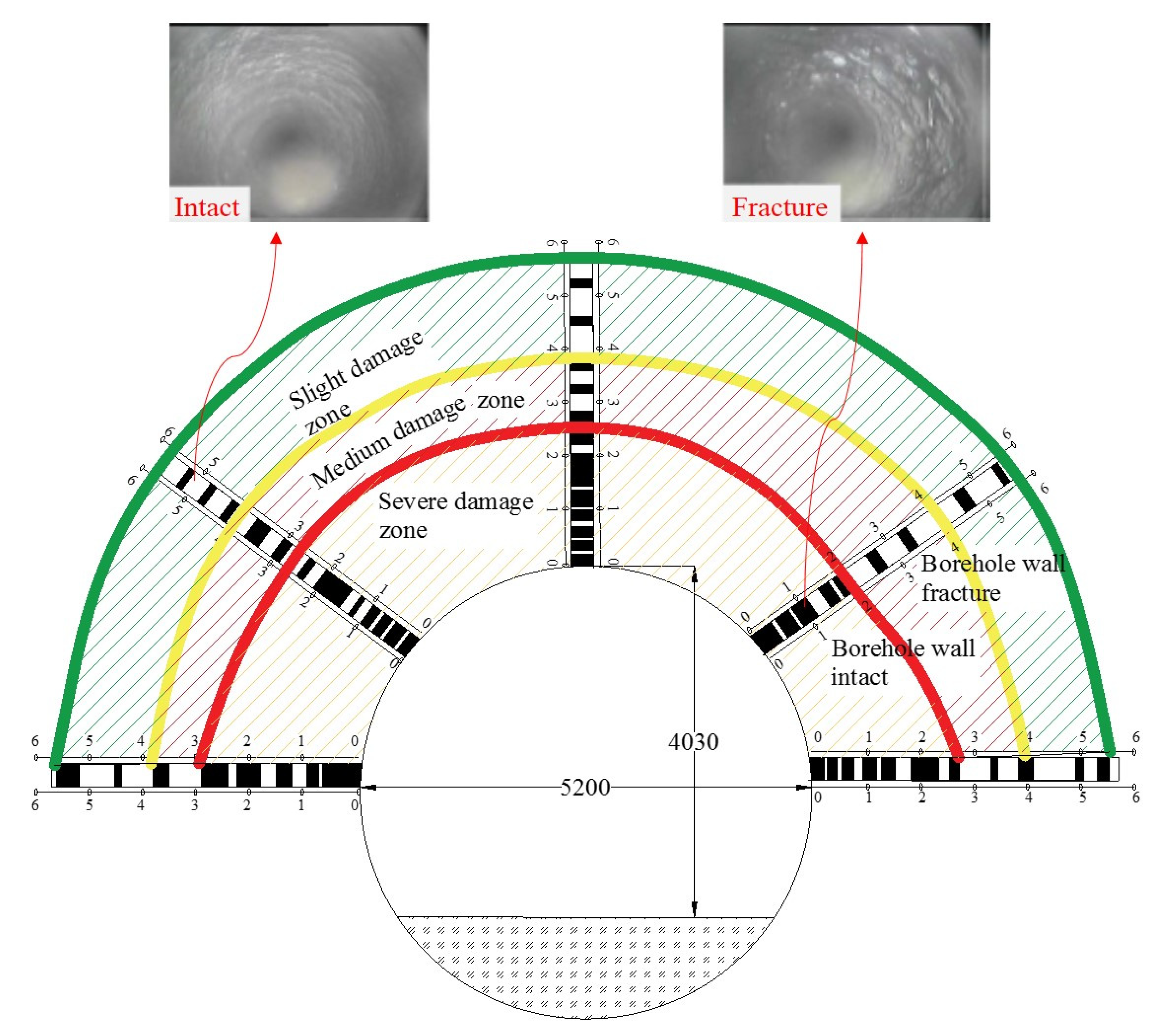
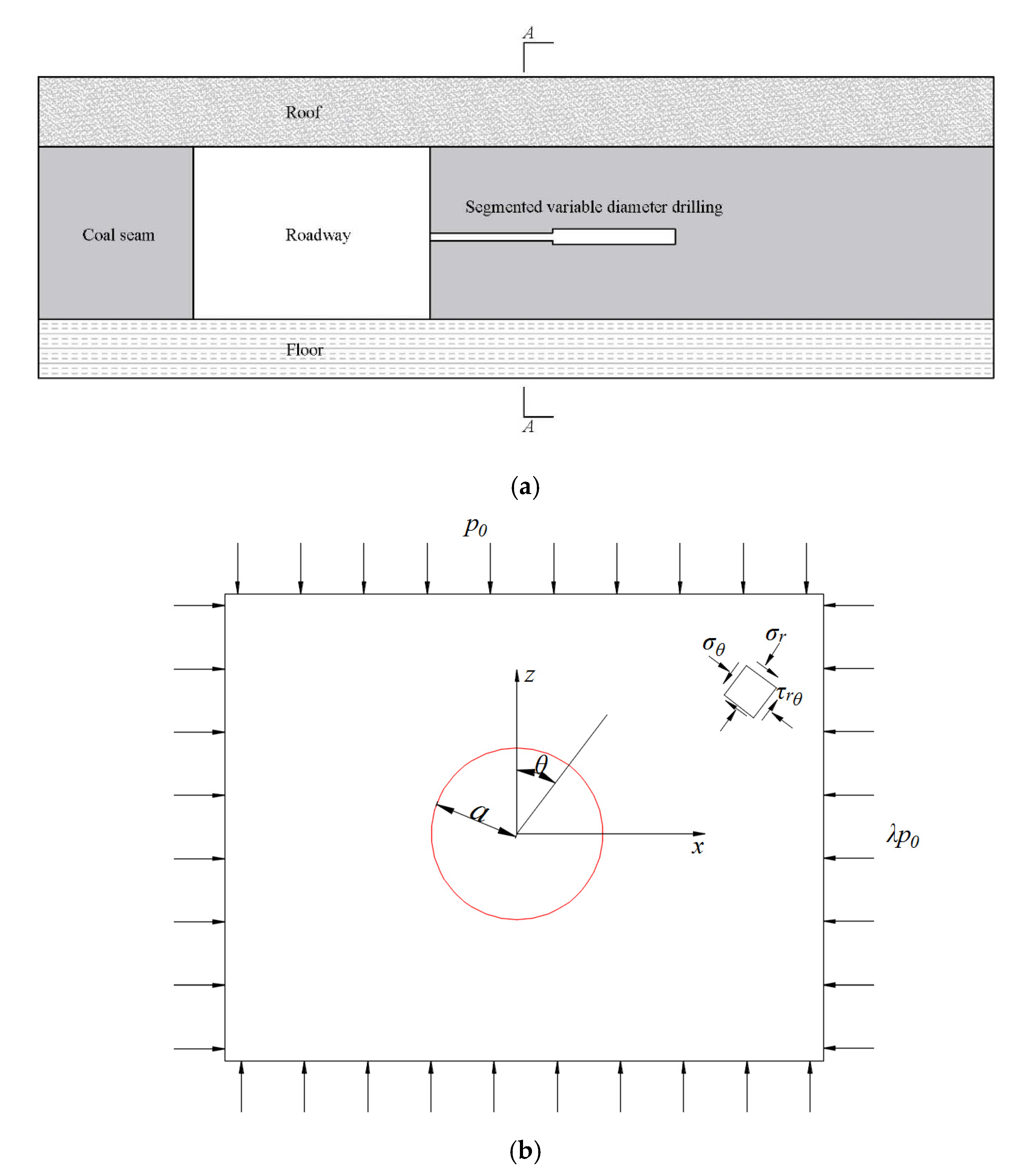
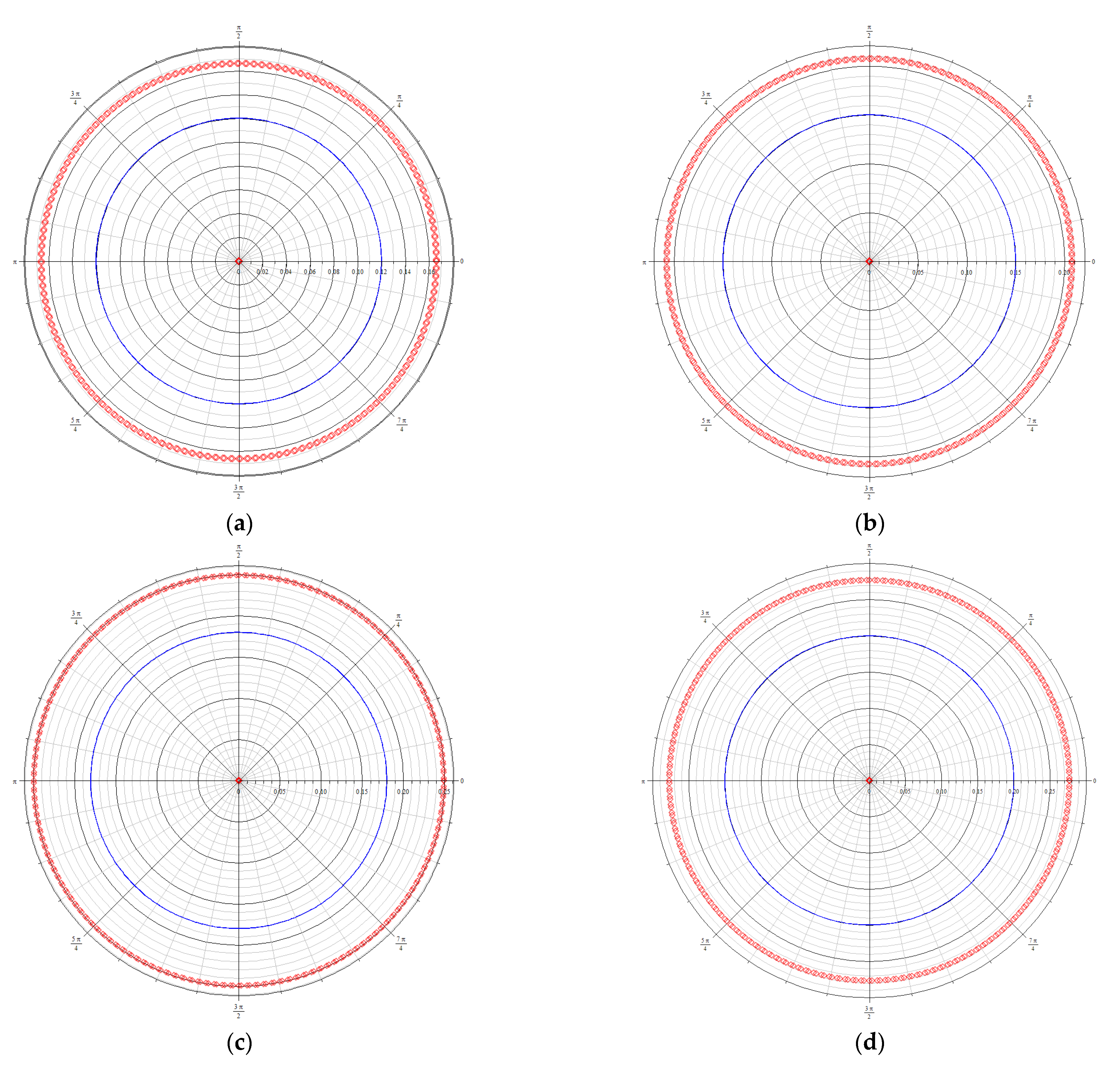
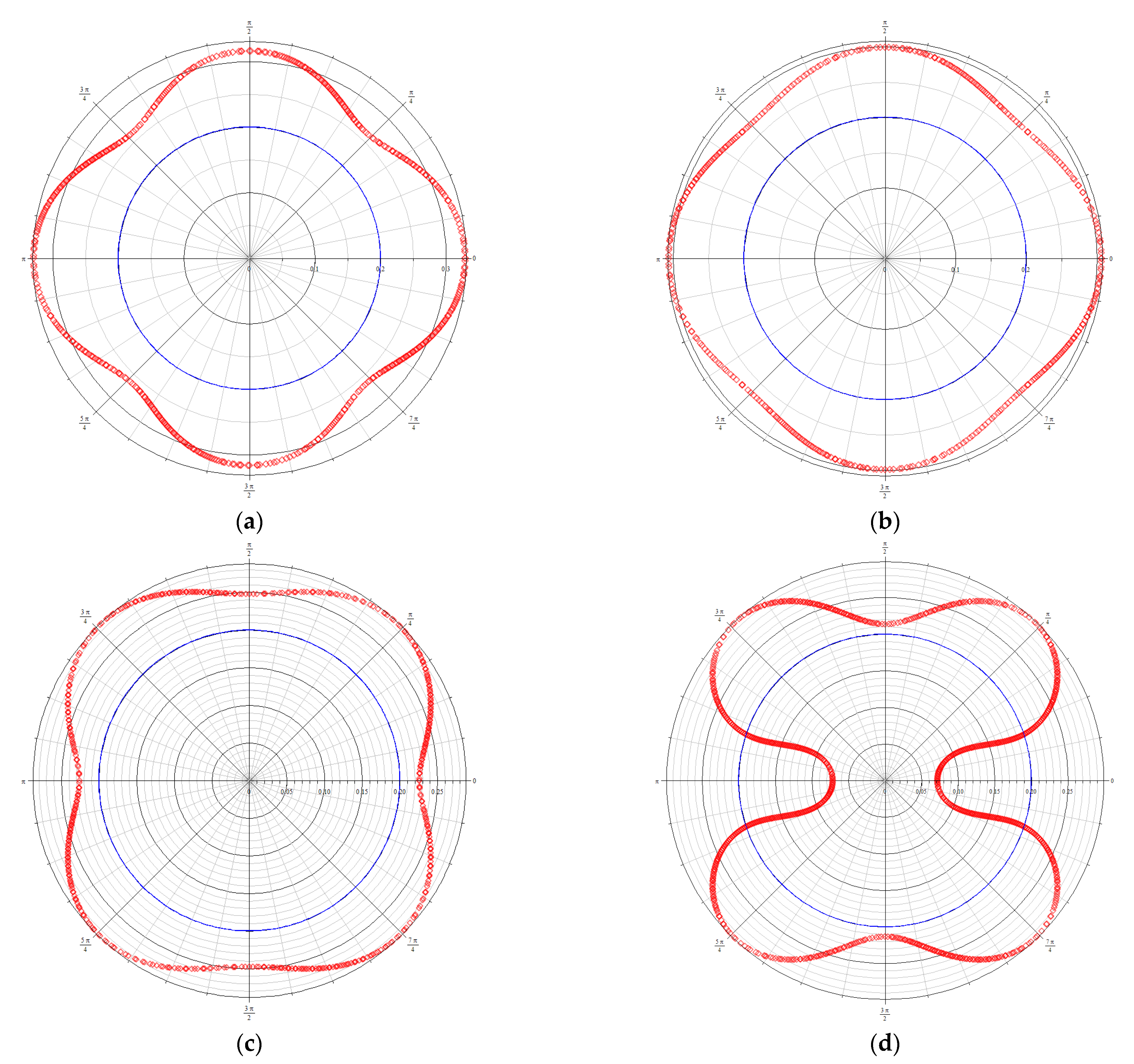
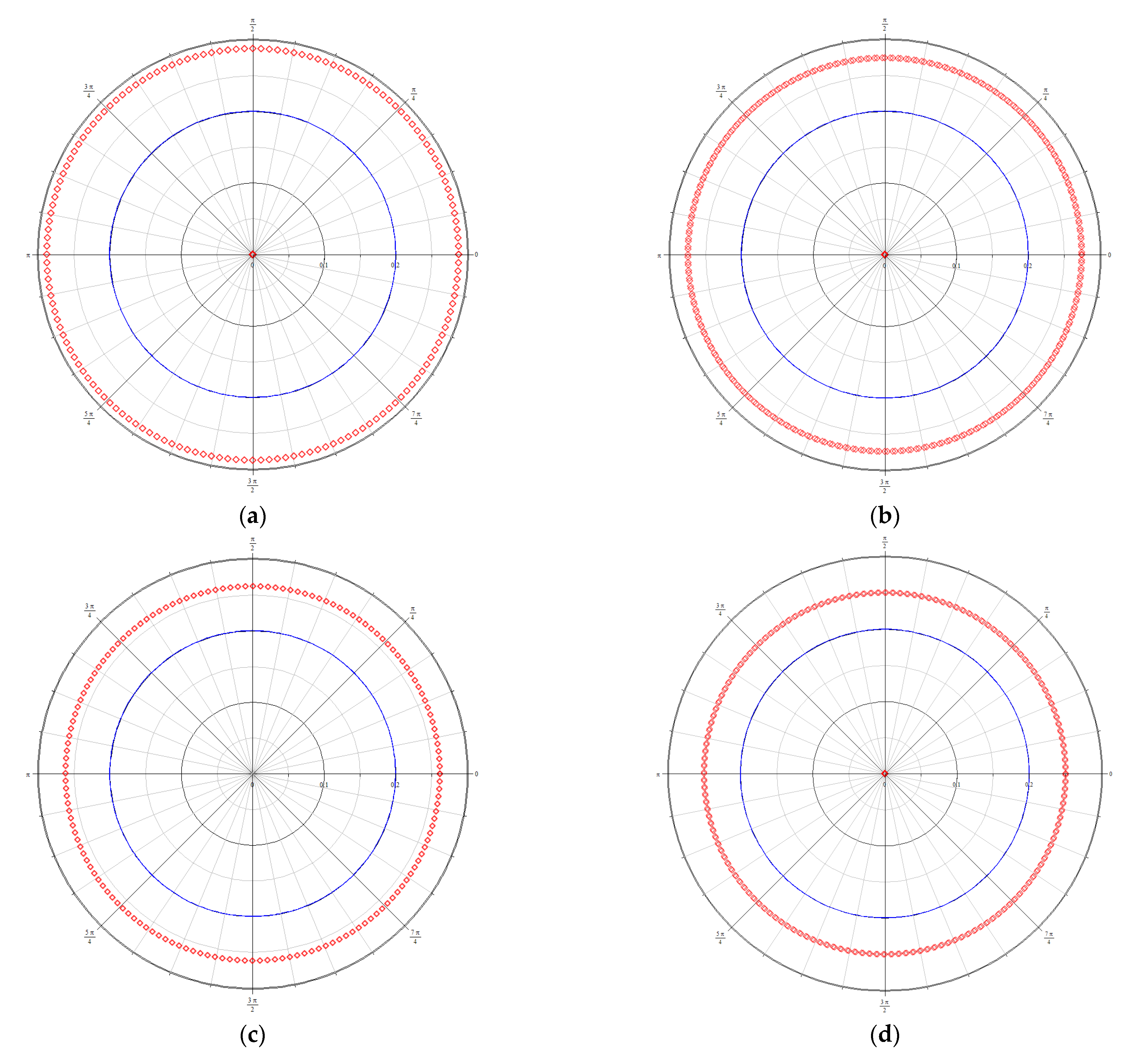
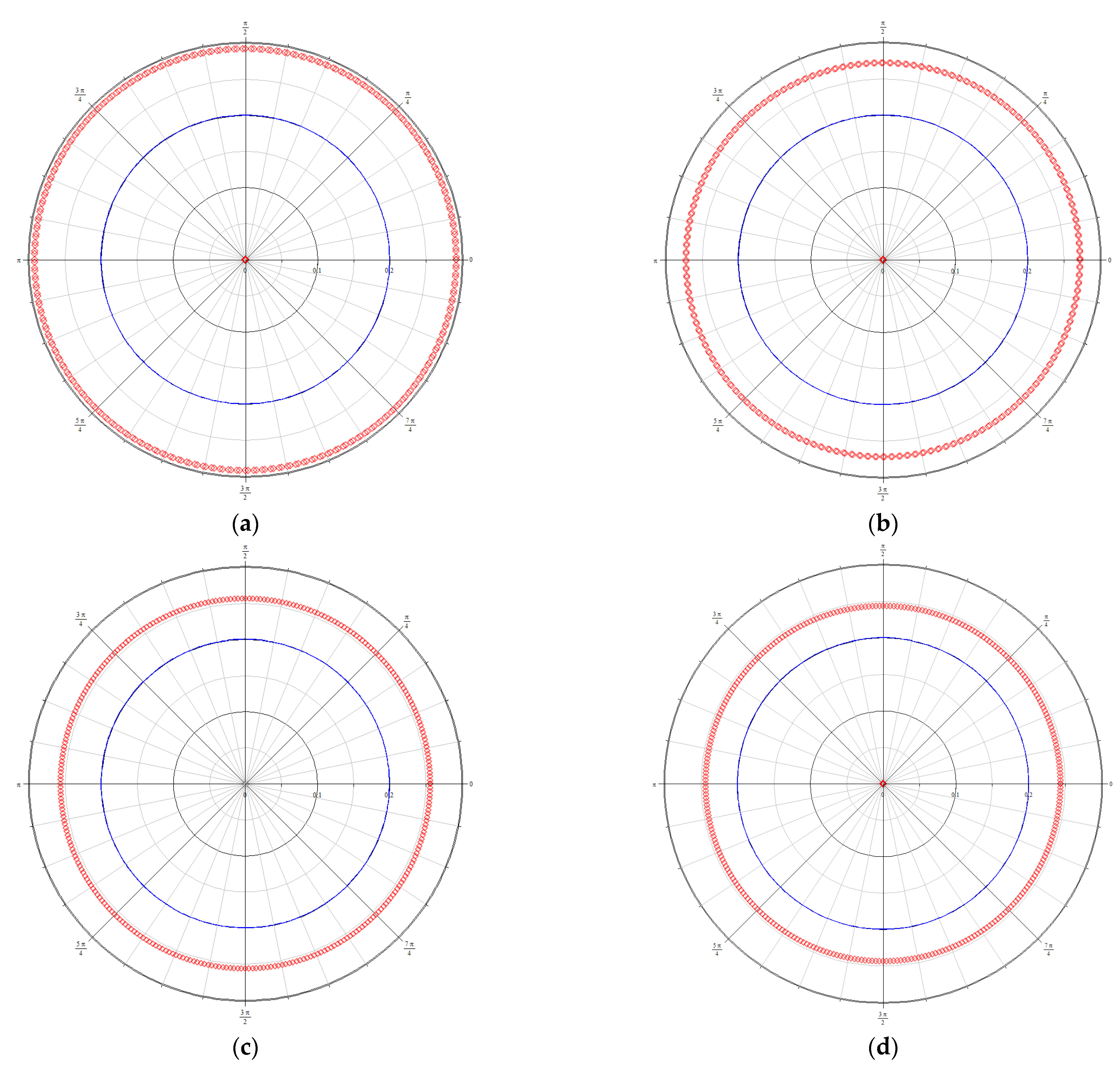
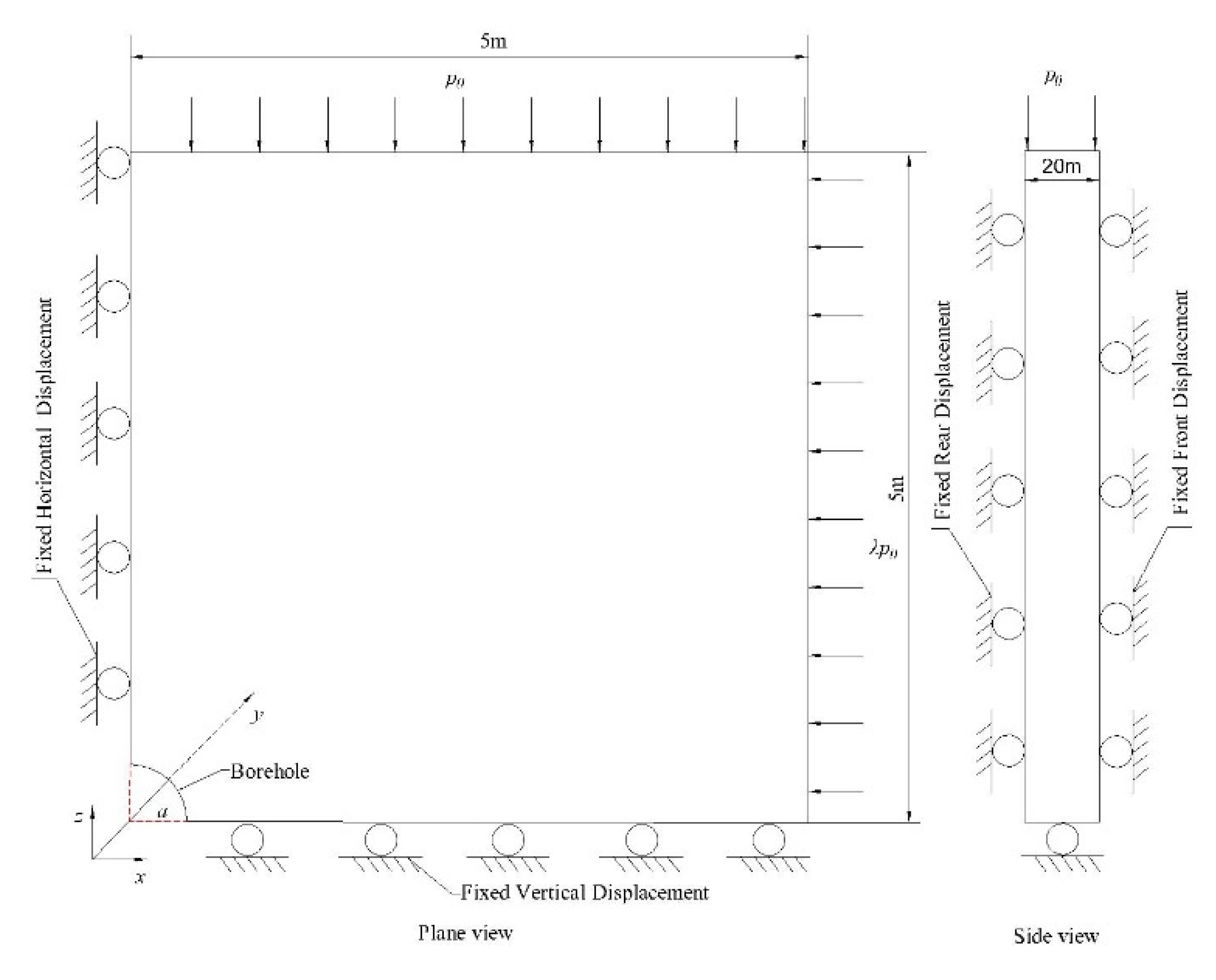


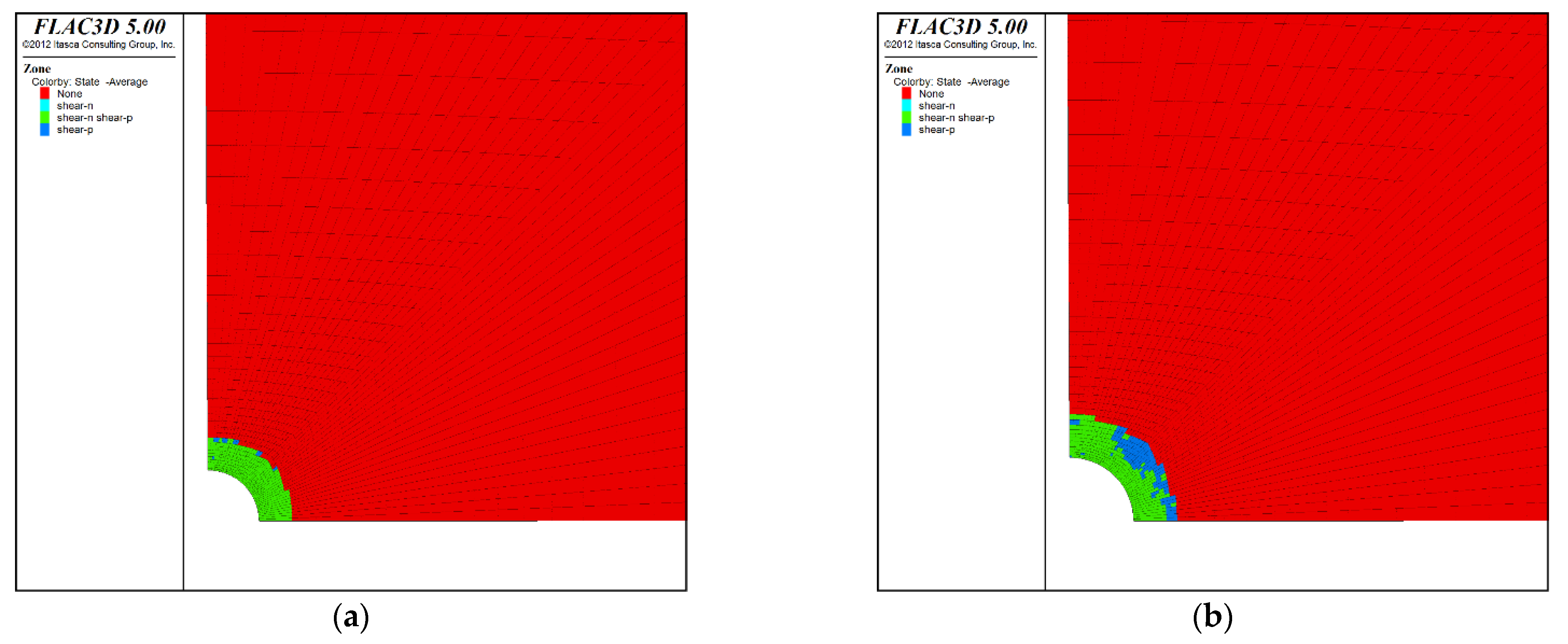
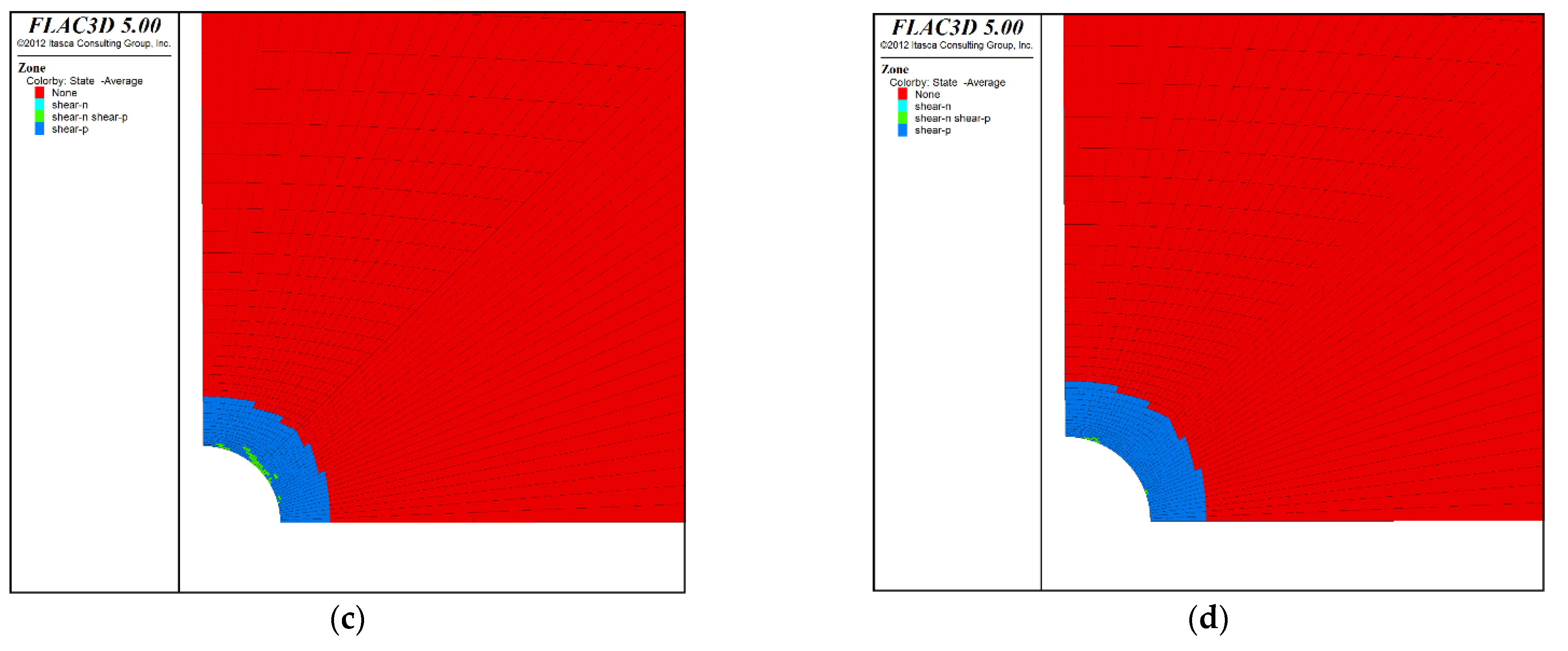
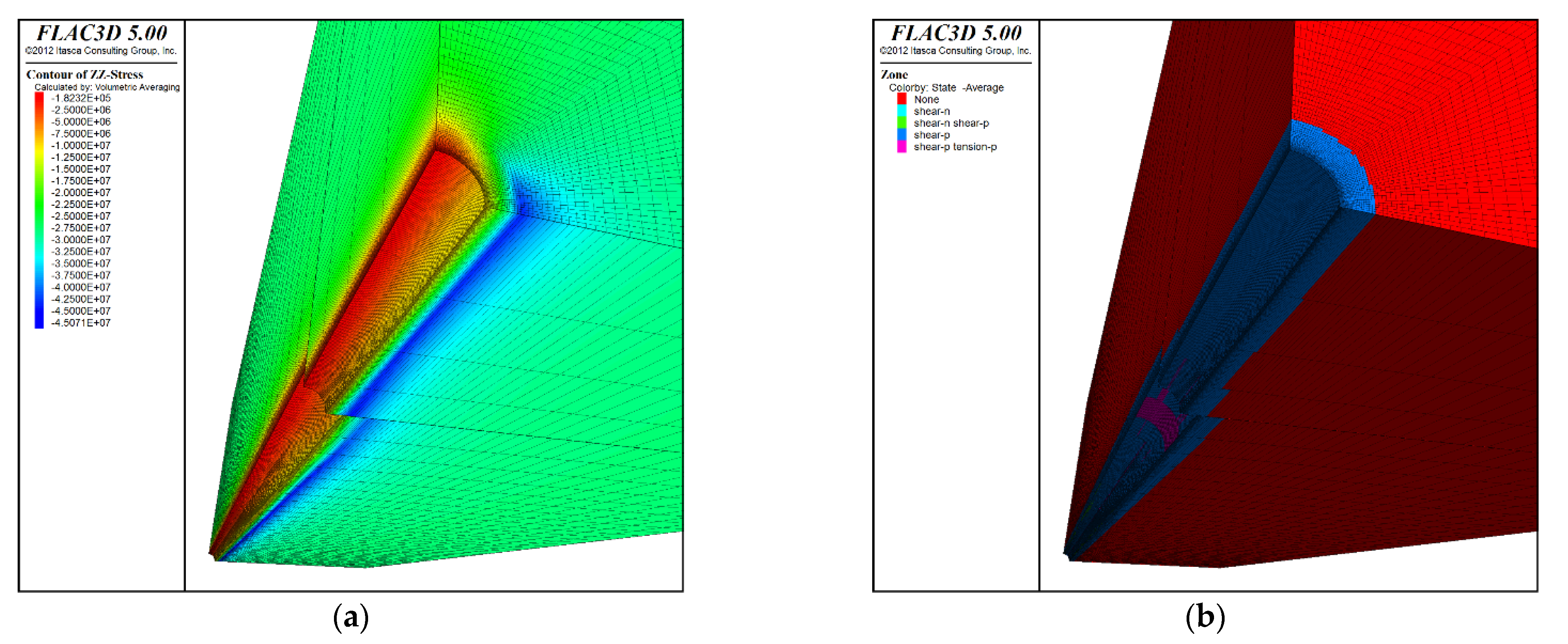
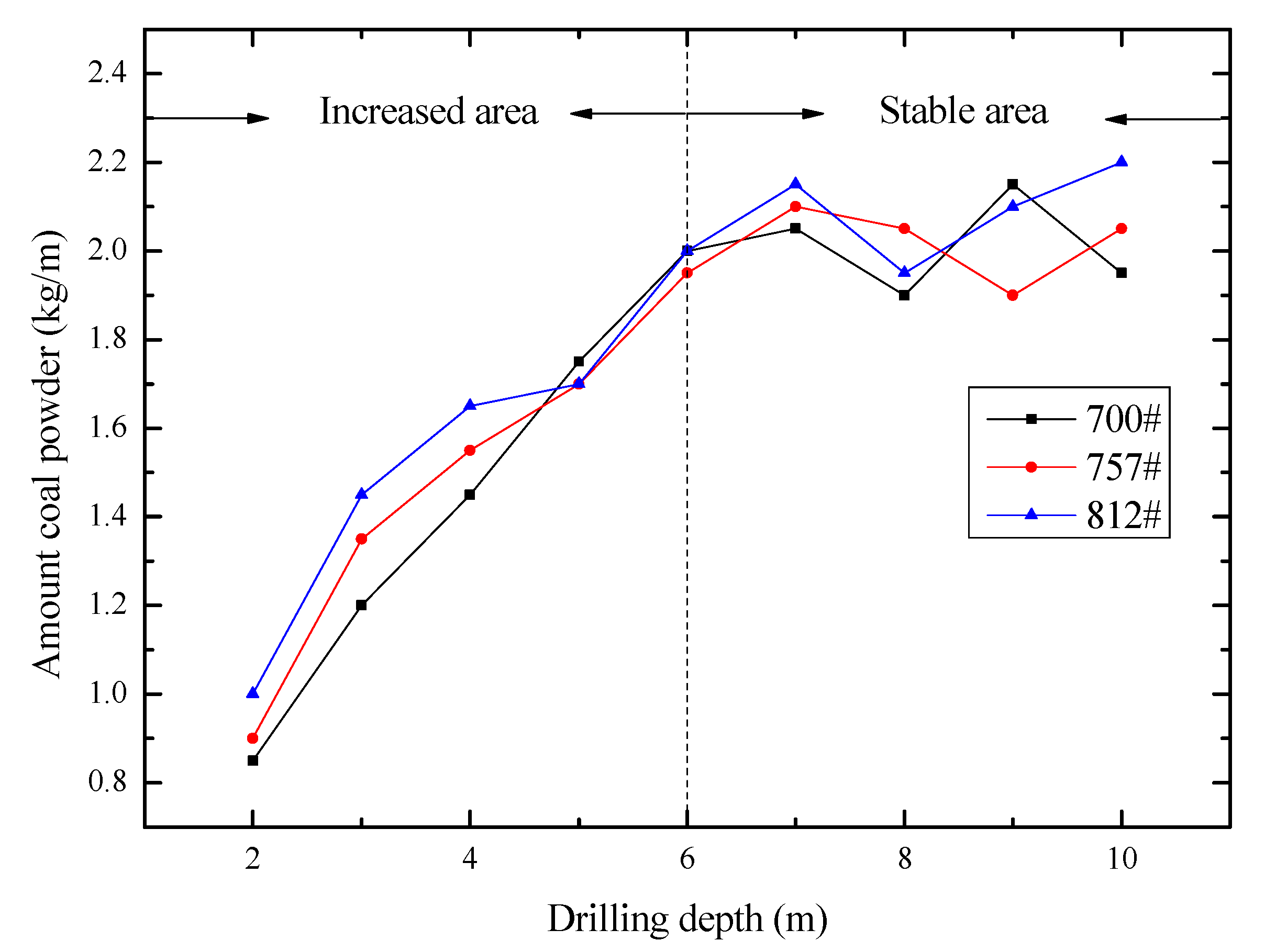
| Size (mm) | Sectional Area (cm2) | Breaking Load (kN) | UCS (MPa) | Average Value (MPa) | Size (mm) | Breaking Load (kN) | UTS (MPa) | Average Value (MPa) |
|---|---|---|---|---|---|---|---|---|
| 52.92 × 52.67 × 103.00 | 27.87 | 29.38 | 15.0 | 17.4 | Φ49.51 × 27.53 | 2.75 | 1.40 | 1.41 |
| 52.53 × 52.58 × 102.63 | 27.62 | 24.59 | 17.6 | Φ49.48 × 27.15 | 5.27 | 1.69 | ||
| 52.66 × 52.84 × 102.71 | 27.82 | 29.43 | 19.6 | Φ49.55 × 27.18 | 4.19 | 1.13 |
| Parameter | Bulk Modulus/GPa | Shear Modulus/Gpa | Cohesion /Mpa | Friction /° | Expansion Angle/° | Tensile Strength/Mpa |
|---|---|---|---|---|---|---|
| Value | 3.9 | 2.8 | 2.81 | 23.7 | 26.8 | 1.41 |
Publisher’s Note: MDPI stays neutral with regard to jurisdictional claims in published maps and institutional affiliations. |
© 2022 by the authors. Licensee MDPI, Basel, Switzerland. This article is an open access article distributed under the terms and conditions of the Creative Commons Attribution (CC BY) license (https://creativecommons.org/licenses/by/4.0/).
Share and Cite
Zhang, L.; Huang, P.; Liu, S.; He, G.; Li, B.; Cao, Y. Relief Mechanism of Segmented Hole Reaming and Stress Distribution Characteristics of Drilling Holes in Deep Coal Mine. Processes 2022, 10, 1566. https://doi.org/10.3390/pr10081566
Zhang L, Huang P, Liu S, He G, Li B, Cao Y. Relief Mechanism of Segmented Hole Reaming and Stress Distribution Characteristics of Drilling Holes in Deep Coal Mine. Processes. 2022; 10(8):1566. https://doi.org/10.3390/pr10081566
Chicago/Turabian StyleZhang, Lei, Peng Huang, Sijia Liu, Gang He, Bing Li, and Yuanwei Cao. 2022. "Relief Mechanism of Segmented Hole Reaming and Stress Distribution Characteristics of Drilling Holes in Deep Coal Mine" Processes 10, no. 8: 1566. https://doi.org/10.3390/pr10081566
APA StyleZhang, L., Huang, P., Liu, S., He, G., Li, B., & Cao, Y. (2022). Relief Mechanism of Segmented Hole Reaming and Stress Distribution Characteristics of Drilling Holes in Deep Coal Mine. Processes, 10(8), 1566. https://doi.org/10.3390/pr10081566







